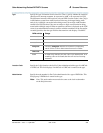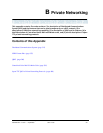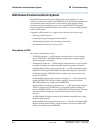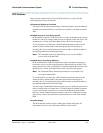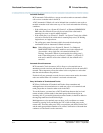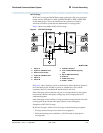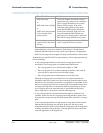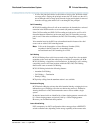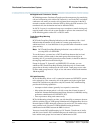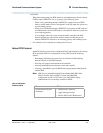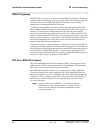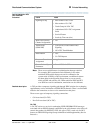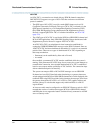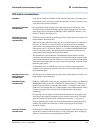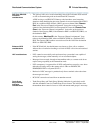
Distributed Communications System
317
Administration for Network Connectivity
555-233-504 — Issue 1 — April 2000 CID: 77730
B Private Networking
~ A call to the principal redirects to the remote coverage point. While the remote
coverage point is ringing, the principal answers the call. In this case the call is
not cut through to the coverage point. Instead, ringing and ringback is removed
from the coverage point and the call is cut through to the principal.
Call Forwarding
DCS Call Forwarding allows all calls to an extension to be forwarded to a selected
extension in the DCS network or to an external (off-premises) number.
If the Call Forwarding and DCS Call Forwarding are both active, and if a call is
forwarded between extensions on the same node, the Call Forwarding coverage
path is used. If the nodes are different, the DCS Call Forwarding coverage path is
used.
Voice-terminal users in the DCS can activate/deactivate this feature with a dial
access code or with a Call Forwarding button.
Note: Calls can be forwarded to a Vector Directory Number (VDN)
anywhere in the DCS network. An attendant cannot
activate/deactivate Call Forwarding for a VDN.
Call Waiting
DCS Call Waiting allows calls from one node to busy single-line voice terminals
at another node to wait until the called party is available to accept the call. With
DCS Call Waiting, a single-line voice terminal user, by knowing a call is waiting,
can quickly process calls from locations within the DCS. DCS Call Waiting
functions the same as normal Call Waiting.
DCS Call Waiting includes the following features:
~ Attendant Call Waiting
~ Call Waiting — Termination
~ Priority Calling
DCS priority calling from the attendant station is not available.
Distinctive Ringing
DCS Distinctive Ringing activates the called-terminal alerting or ringing device to
indicate the type of incoming call to the user before they answer it. Distinctive
Alerting functions in a DCS environment the same as it does within a single
system.
By default, internal calls are identified by a1-burst ringing pattern, external calls
by a 2-burst ringing pattern, and priority calls by a 3-burst ringing pattern.
However, you can administer these patterns.
Leave Word Calling
LWC transparency in a DCS configuration allows messages from a DEFINITY
switch to another node, depending on the storage capability of the remote node.



